A few of you asked questions about the interior finishes of 18th century stays in response to the last Cassandra Stays Sew-Along post. Let’s take a wee break from making to look at some extant stays, and their interiors.
This will lead us nicely into the next-after-one step: the optional bellypiece and reinforcing!
Previously on The Cassandra Stays Sew Along:
- Choosing Material for the Cassandra Stays
- Making Linen Buckram
- Making your Mock-Up
- Fitting
- How to alter the Cassandra Stays pattern to be front-laced only
- Cutting Out & Basting
- Testing techniques
- Sewing the Boning Channels
- Making the View B Stomacher using historical materials
- Marking & Sewing Eyelets
- Assembling the Panels & Boning
- The Final Fitting – how to properly fit stays
- Sewing Down the Seam Allowances
Extant Stay Interiors:
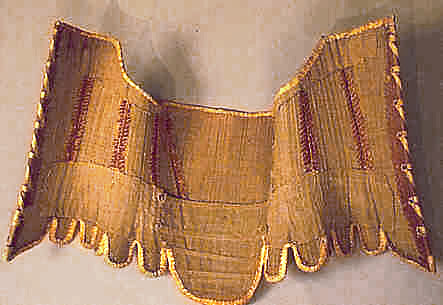
Stays, 18th C. (c. 1750-60) sold by antique.fashions
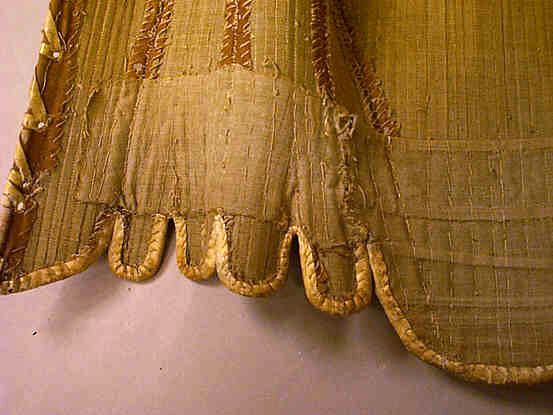
Stays, 18th C. (c. 1750-60) sold by antique.fashions
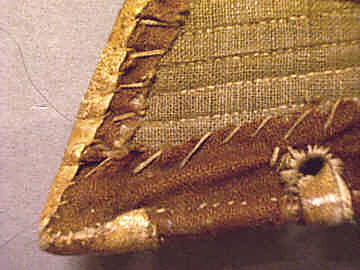
Stays, 18th C. (c. 1750-60) sold by antique.fashions.com
You can see here how large and rough the interior stitches are, how little the seams have frayed over the last 200+ years, and how frequently stays include extra layers of interlining for support.
This pair includes a shield-shaped bellypiece, just like the Cassandra:
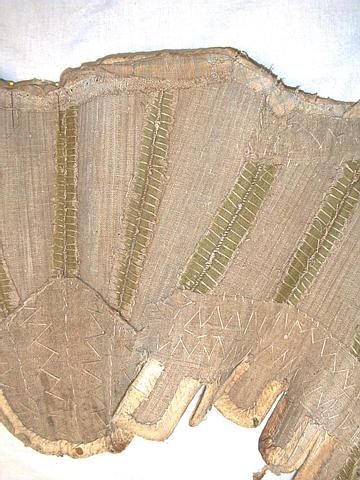
Inside a pair of stays (1740 – 60)
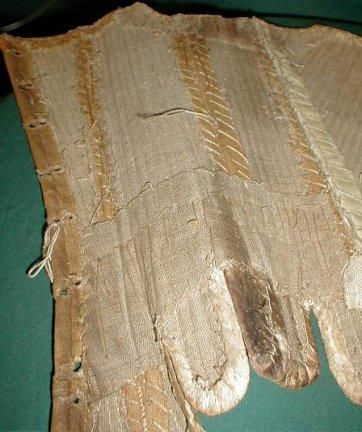
Stays, 1740-1760, America, Two tone tan linen, cane boning (probably). Band of thin cotton down front. Edges & flaps lined w kid leather. Lined w heavy tan homespun linen, sold on Ebay, c.2004
You can see that many of these stays have additional reinforcing on the waist. This could easily be added to the Cassandra Stays using the instructions for the bellypiece.
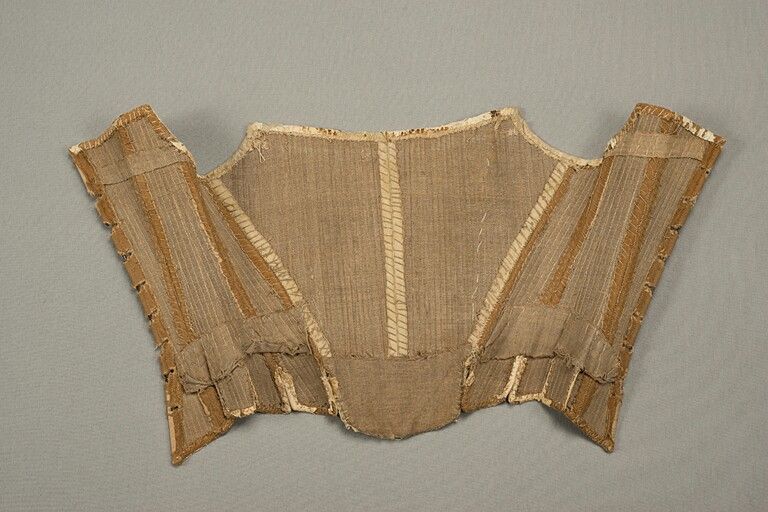
English or Continental European or American stays 1780-1790
Some stays have even more elaborate engineering. This pair has a curved front busk, and curved horizontal bones or canes going across the bust, under the arms, and around the waist:
The additional horizontal bones are all held in place by interlining layers like the bellypiece:
Here’s another pair with shaped reinforcing around the waist, and a bust rail very similar to the one in the Cassandra pattern:
And lets finish up with a look at what the stays look like once a lining is installed, featuring a pair with front and back lacing:
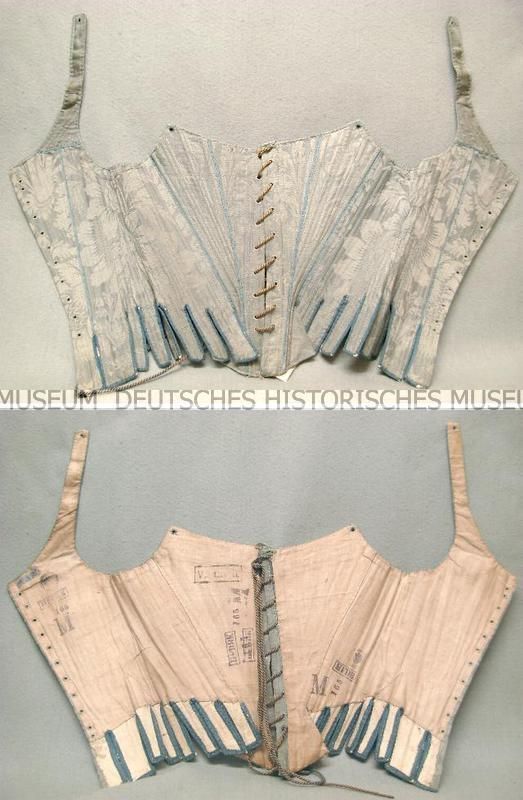
Stays, probably 1770s, Germany
You can see more stay interiors in Redthreaded’s post about her visit to the DAR museum, and on Lara Corset’s pinterest page of her antique corsets.
Hope that gives you some inspiration, and reassurance, about the interiors of your own Cassandra Stays!

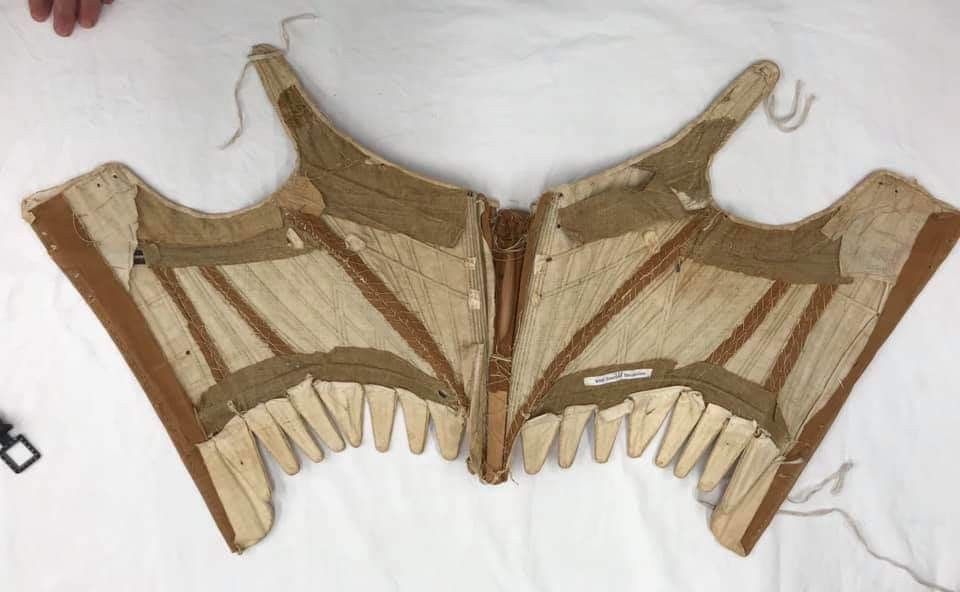
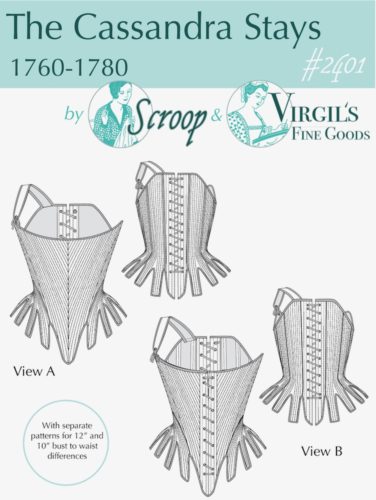
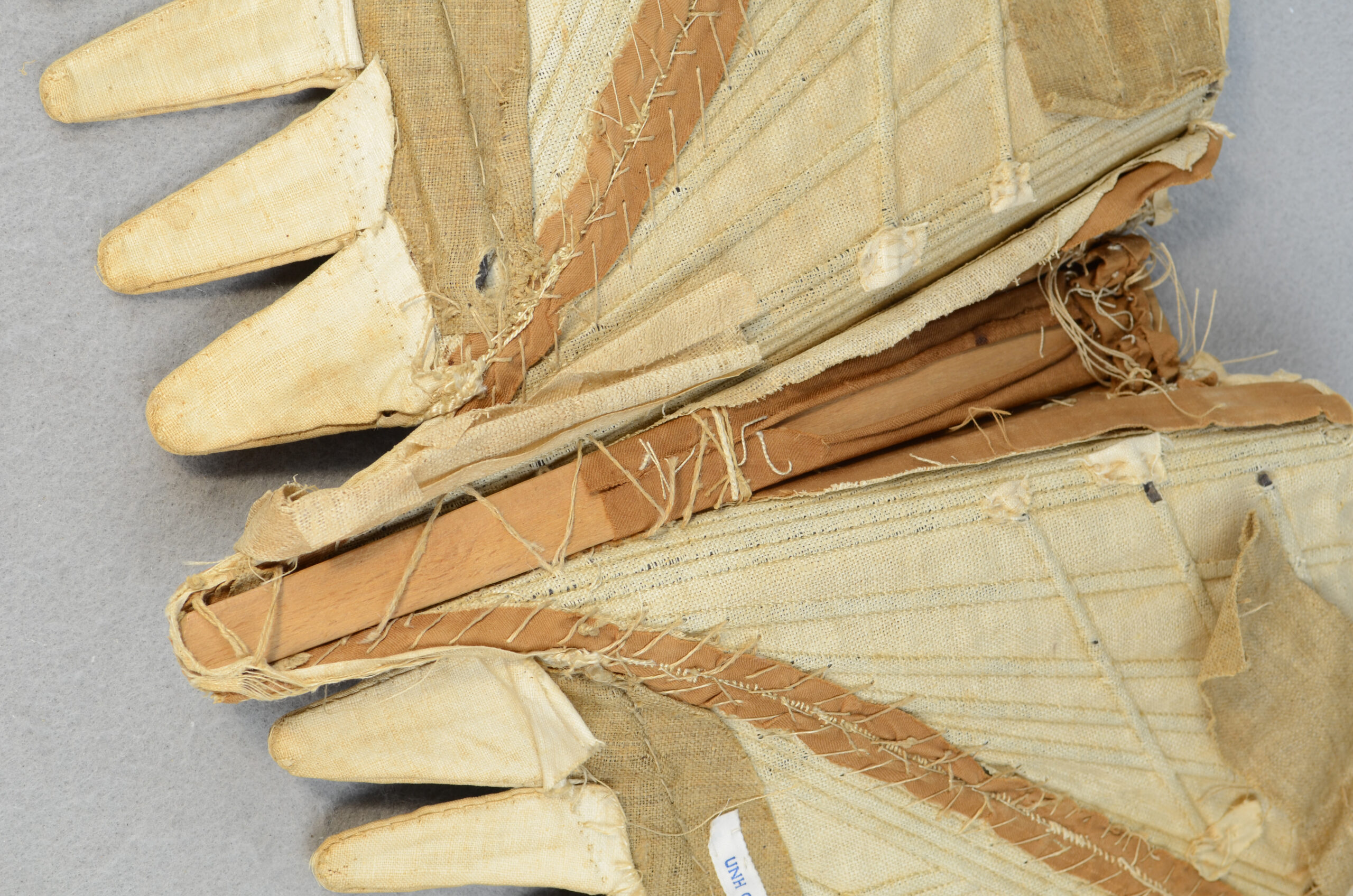
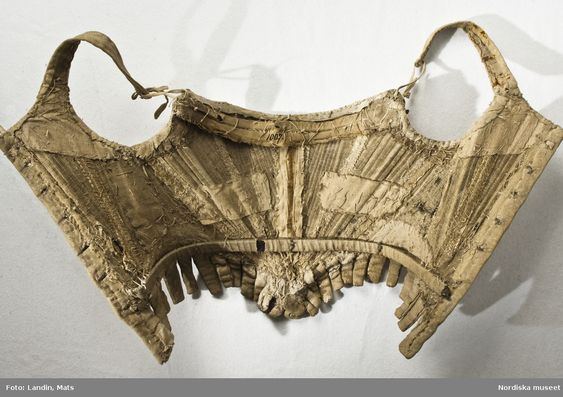
Thank you for the tour! I’ve not seen photos of these particular stays before, and it’s good to see the variety of extra shaping treatments. Gives another layer of depth to our understanding of stays overall.
Wondering if any of the highly supported stays have evidence of being full-dress wear. I suspect, extra support could simply represent wearer’s individual desires, but if extra support often goes with fancier design or materials, then maybe this is a shred of evidence that some wearers at least chose stays to fit occasion. Obviously lots of factors involved…
Thanks kindly,
Natalie across the biggest pond